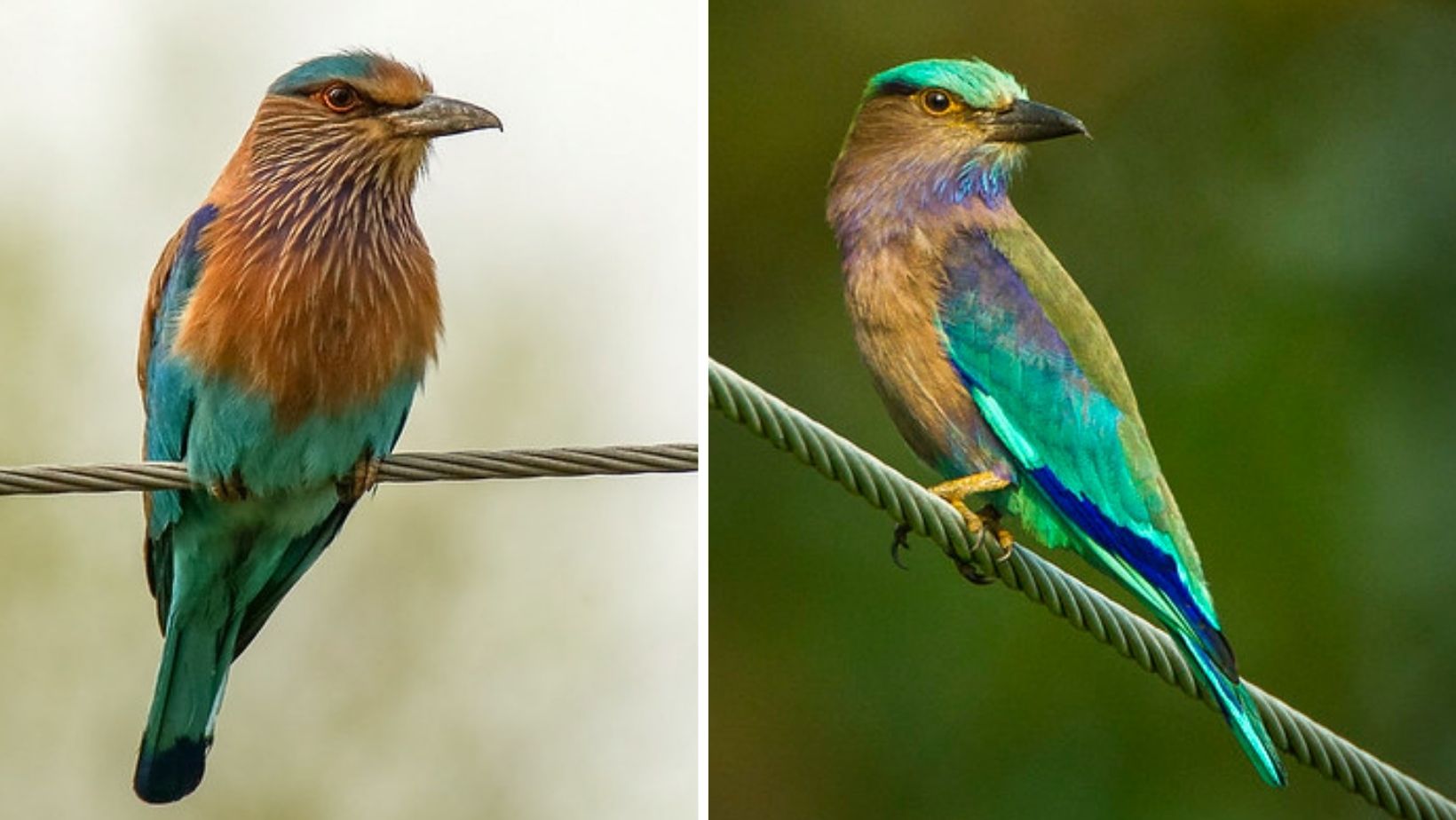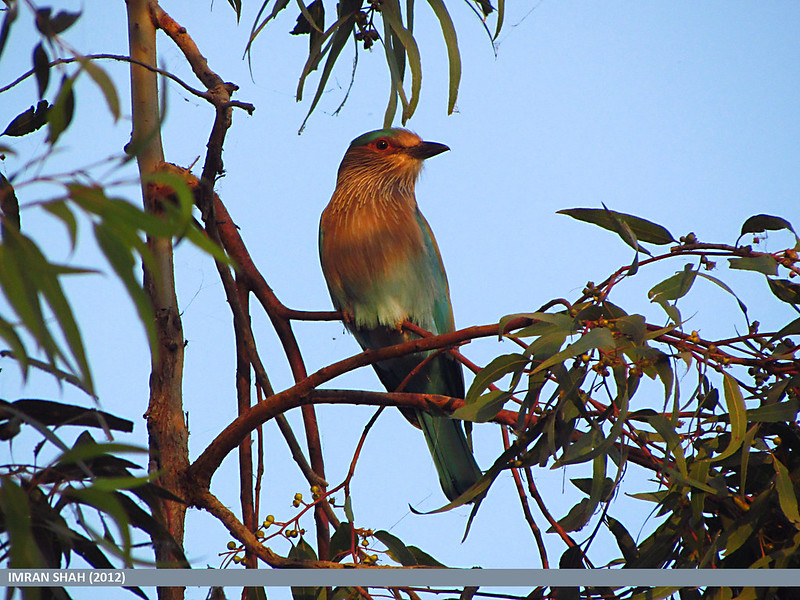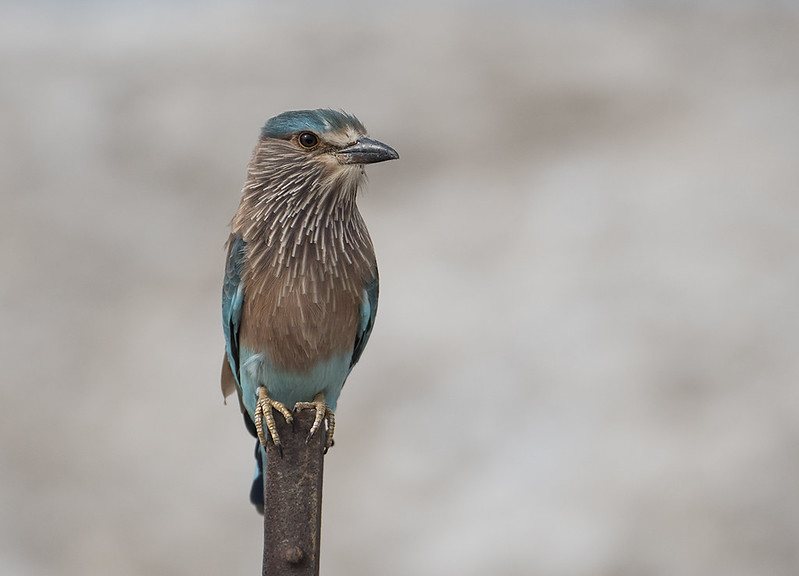Clad In A Coat Of Iridescent Blues And Purple, This Bird Puts Its Spellbinding Opalescent Color Combination To Stunning Effect In Flight!

The Indian Roller

Photo Courtesy of Imran Shah / CC BY-SA 2.0
The Indian roller (Coracias benghalensis) is a medium-sized bird measuring 30 to 35 cm in length and weighing in at 160 to 180 grams. The crown, belly, and vent area are primarily blue as are the flight feathers, though they tend to be more purplish blue with a band of pale blue. The neck and throat are pale purplish brown with white streaks. The breast, back, and nape are also brown. Primary feathers are purplish blue with a prominent band of pale blue while the tail is sky blue with a terminal band of dark blue. The skin around the eyes is more of a rusty brown. These birds have a long compressed bill that has a hook on the tip.

Photo Courtesy of Imran Shah / CC BY-SA 2.0
Males and females of this species look very similar in appearance.
Related Reading:
– A highly eccentric very charismatic bird who tops off his understated look with an outstanding orange-tinted crest!
Juvenile birds are duller looking in comparison to adult birds tending to be browner in color.

Photo Courtesy of Kandukuru Nagarjun / CC BY 2.0
These birds can be found across Asia, from Iraq and the UAE through to southwestern Asia and the Indian Subcontinent and Sri Lanka, the Lakshadweep islands, and the Maldives.

Photo Courtesy of Francesco Veronesi / CC BY-SA 2.0
Indian Rollers prefer farmlands, agricultural areas, plantations, urban parks, rural gardens as well as tropical and subtropical dry forested areas, and savannahs.

Photo Courtesy of Koshy Koshy / CC BY 2.0
Feeding on the ground these birds like to dine on insects such as moths, locusts, beetles, wasps, crickets, ants, and caterpillars. They will also take frogs, lizards, and snakes.

Photo Courtesy of Imran Shah / CC BY-SA 2.0
Little is known about the breeding habits of these birds, however, what is known is the breed from March through to June in India. Monogamous birds, the male puts on an aerial display in a territory he establishes. Once a female accepts his advances a nest is built in either tree holes, abandoned woodpecker holes, or crevices. A clutch of 3 to 5 white eggs is laid within with both parents incubating the eggs and feeding the chicks.

Photo Courtesy of Wildnest Travel & Photography / CC BY 2.0
The Indian Roller global population is regarded to be of Least Concern on the IUCN Red List. In fact, it is thought to be gradually increasing in most of its range.

Photo Courtesy of Imran Shah / CC BY-SA 2.0